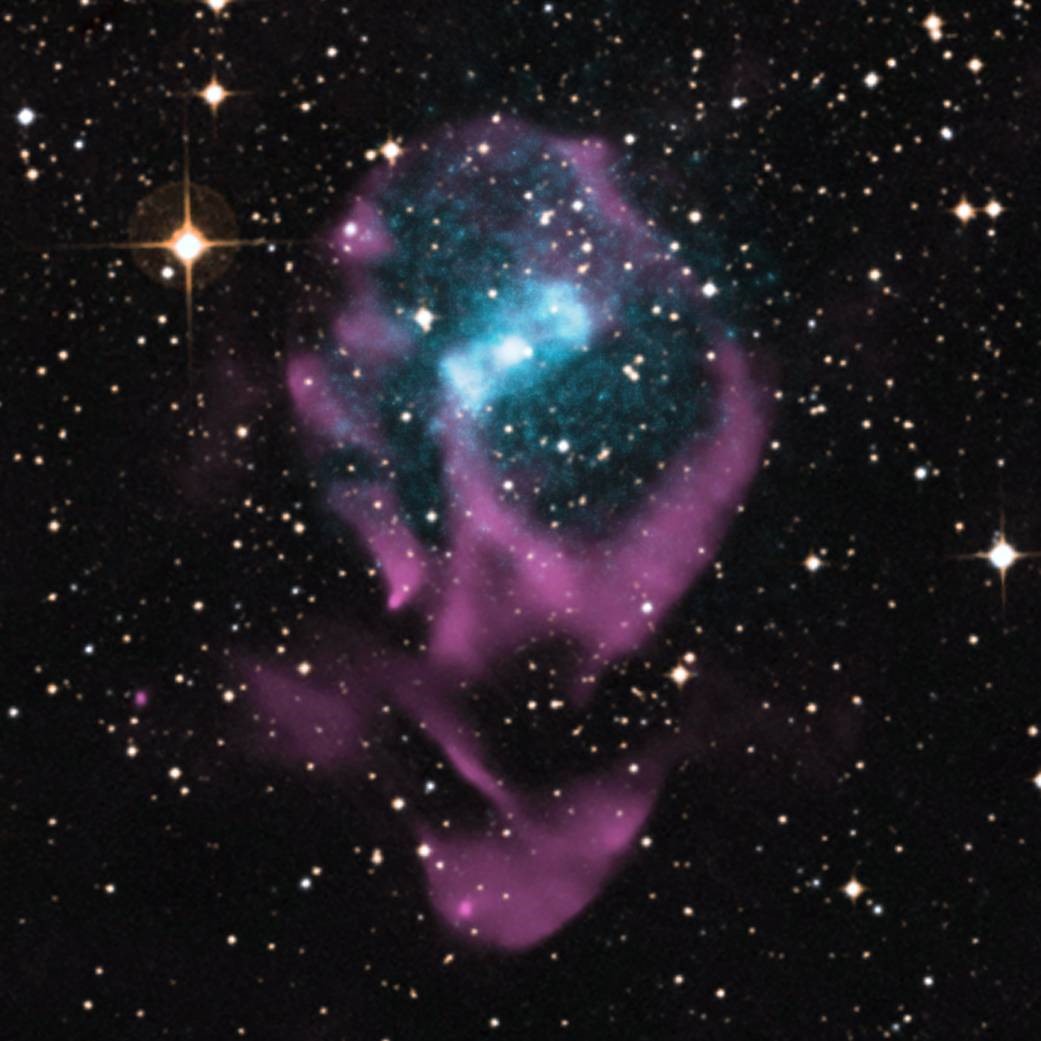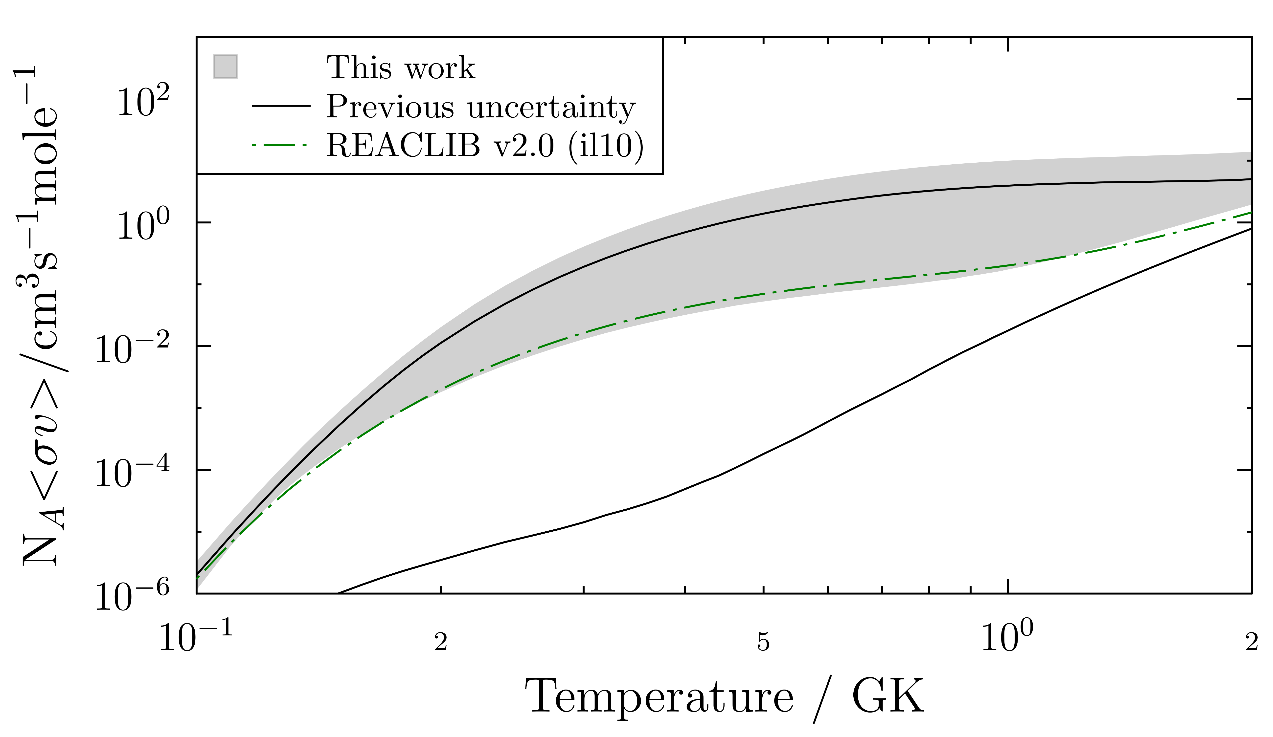The 23Al(p,gamma)24Si Reaction Rate Sheds Light on the Neutron Star Compactness
Type-I X-ray bursts are the most frequent stellar explosions in the galaxy. They occur in binary systems, where a thermonuclear runaway takes place, fueled by hydrogen- and helium-rich matter accreted onto a neutron star from its companion. Comparisons of the observable brightness of the emitted light over a period of time (light curves) with model calculations help decode hard-to-get information related to the elusive neutron-star structure. Specifically, simulated X-ray light curves with the assumed surface gravitational redshift can be exploited to extract the neutron-star mass-to-radius ratio (or compactness). However, these studies are limited by the uncertainties in the nuclear reaction rates that power the bursts, particularly those involved in the so-called rapid proton-capture process (rp process). The sensitivity of the simulated light curve to these nuclear reactions was recently investigated by analyzing the X-ray bursts emitted by the low-mass X-ray binary star GS 1826-24. Of all the reactions included in this study, 23Al(p,gamma)24Si turned out to be among the most important ones. In particular, the uncertainty of this reaction rate was found to strongly affect the inferred neutron-star compactness.
At the temperatures relevant for X-ray bursts, the 23Al(p,gamma)24Si reaction proceeds mostly through the resonant capture into the first proton-unbound (2+2) state of 24Si. Until now, the main source of uncertainty for this reaction rate has been the energy of the 2+2 state (E2+2), reported with conflicting results in the literature. An experiment was carried out with GRETINA, the S800, and LENDA at NSCL that used the surrogate reaction 23Al(d,n)24Si to measure the nuclear properties, including the important value of E2+2, necessary to calculate the reaction rate. The quality of the data allowed for a drastic reduction (by a few orders of magnitude) of the reaction-rate uncertainty. This experimental achievement provides a step forward in the determination of neutron-star compactness from X-ray bursts. It is anticipated that the powerful combination of GRETINA, the S800, and LENDA will be used to constrain other important reaction rates for various astrophysical scenarios.
This work is published in Phys. Rev. Lett.

Figure 1: Circinus X-1, the youngest ever-seen X-ray binary. The image shows the X-rays (blue) and radio emission (purple), which have been overlaid on an optical field of view from the Digitized Sky Survey. Image credit: X-ray: NASA/CXC/Univ. of Wisconsin-Madison/S. Heinz et al.; Optical: DSS; Radio: CSIRO/ATNF/ATCA

Figure 2: The calculated 23Al(p,g)24Si reaction rate as a function of temperature. The region enclosed by the two solid black lines indicates the 1-s uncertainty band obtained prior to the present measurement. The grey band indicates the corresponding uncertainty band determined with the new results measured in this work. The reaction rate from the REACLIB database is also shown (green dashed line).



